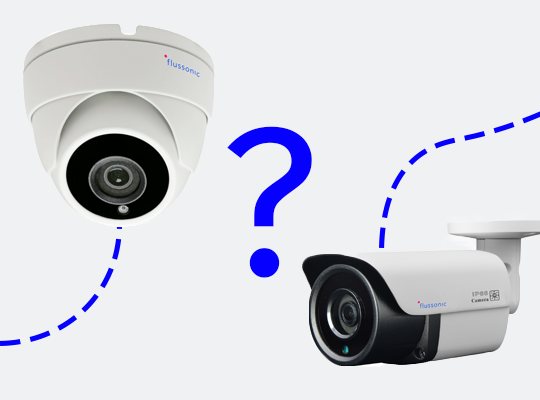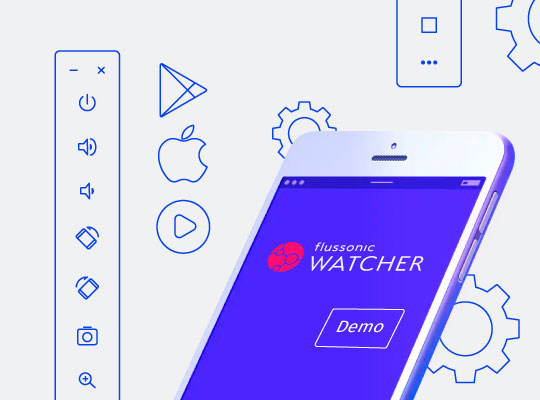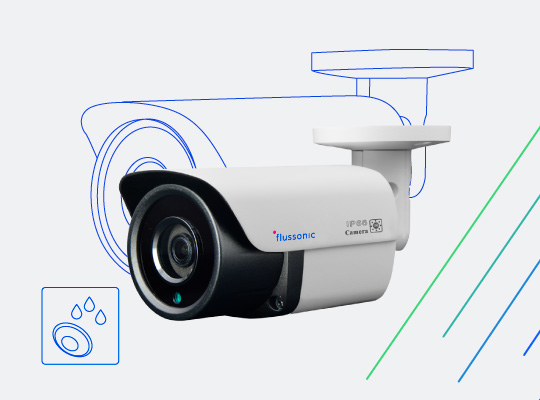Night as bright as day with Flussonic v2 cameras
We selected the best cameras for you and optimized them to work best with Flussonic Watcher
As of today, you may find any camera to meet your every need with any value for money. To spare you from learning all the nuts and bolts in the field we have made the choice simple for you by selecting the best cameras for home and business video surveillance and enhancing them with our Agent software or Iris firmware to work best with Watcher. You don’t have to search through all the Internet to find your perfect camera. The simplest best practical solution is already on our website.
You may refer to our documentation to find out how Agent and Iris work, and we also recommend you to read Three questions to ask yourself before buying a video surveillance camera. In the meantime, this article will tell you about the “visible” advantages that made us sell these cameras with our brand on them, i.e. the features improving the image quality.
Before we proceed, let’s note that you still can install Agent or Iris to any supported non-Flussonic camera if you have corresponding skills; or, you can use our cameras with other software. But remember that Flussonic cameras are connected with Flussonic Watcher on a plug-and-play basis, i.e. no additional setup is required. The choice is always yours.
StarVis technology and IR illumination
StarVis is a night vision technology developed by SONY. The point of StarVis is capturing full-color video at night. Unlike cameras with IR illumination that film black-and-white video, the cameras with StarVis allow you to see targets in color. This accuracy is achieved by a back-illuminated sensor. The light-sensitive layer is located closer to the light source, so the light is not lost along the way and not reflected from the metal components of the sensor. If there is no light at all (illumination of less than 0.001 lux) the camera switches to the infrared mode automatically. You may find all the details on how it works on the manufacturer’s website.
The StarVis technology in Flussonic v2 cameras provides the following advantages:
- The StarVis camera can be disguised at night while IR diodes are clearly visible from afar
- Visibility distance is 3 times more than with IR cameras
- The camera with StarVis can capture video through the glass at night. For example, you cannot place a camera with IR illumination before the window in your house to capture your backyard, because IR rays will reflect from the glass and flare the frame. StarVis operates seamlessly in such a case.
Let’s look at the real-world example. You can check it yourself by the Live Demo link in the specification of Flussonic v2 cameras on our website. This is what Flussonic Bullet/Dome v2 camera films from our office window at daytime:

And this is at nighttime:

The parking lot is illuminated enough to avoid IR illumination. There are no artifacts on the image even though the camera is filming through the glass. Basically, what you see on the frame is what you see from the window with your own eyes.
You can use this function in video surveillance for:
- Analysis of administrative or criminal offenses: even at night, you can detect the color of clothes or the color of the offender’s car for further identification.
- Warehouse surveillance: boxes of different colors on the shelves are clearly visible in low light conditions.
- Video surveillance on playgrounds, especially in winter: to make it easier to identify children by the color of their clothing.
Adjusting the resulting frame
Almost all modern IP cameras have tools to eliminate lighting imperfections. Those tools can be either hardware or software. In our cameras, the hardware one is the StarVis technology described above, and the software tools include AGC, BLC/HLC, WDR/HDR, and DNR. You’ve probably noticed those abbreviations in the camera specifications. Let’s see what they mean:
- AGC stands for Automatic Gain Control. This feature is for getting an acceptable picture in general low light conditions. It may lead to excessive noise in the frame when there is very little light.
- BLC or HLC is Back or High Light Compensation. Objects may appear dark in the frame when there is a bright light in the background while the bright light areas are overexposed. The BLC function brightens the entire frame so that the darker area of interest could be seen; HLC allows avoiding overexposure in the areas of bright light.
- WDR/HDR is for Wide/High Dynamic Range. With this function, you can get a high-quality image of both dark and bright areas of the frame. Our cameras use digital image processing with the dynamic range of 120 db to achieve this effect.
- 2D/3D-DNR is a Digital Noise Reduction technology. It is engaged to remove artifacts including those resulting from the above processing methods. Each individual frame is cleared of noise in 2D mode, and several consecutive frames in 3D. 3D-DNR is better at reducing noise in still areas of the frame, but moving objects may look blurry with it.
Let’s see how HLC and WDR affect the image received from the camera in our office.
On the source image without any digital light adjustments, you can see that the windows area is overexposed while the objects in the office are rather dark and indistinguishable:

Now you can see more details and textures in the office with WDR enabled:

Or, you can set HLC to maximum to see the neighboring building behind the window:

You can manage the frame adjustment functions both in the web UI of Flussonic cameras and in the camera settings in Watcher to find the combination of parameters that leads to the most satisfactory image.




